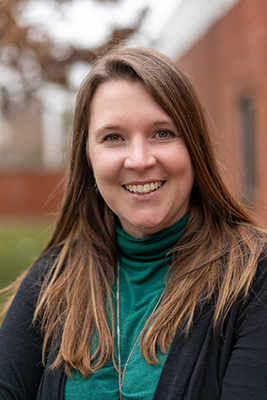Dickinson College
Faculty Profile
Jorden Hayes
Associate Professor of Geosciences (2016)Contact Information
Kaufman Hall
717-254-8303
Bio
Dr. Hayes is a geophysicist and critical zone scientist interested in the transformation of rock at depth into a habitable substrate for life at the surface. She works in the field and lab combining indirect geophysical measurements that image the subsurface with direct measurements of samples from outcrops and boreholes. Jorden is enthusiastic about mentoring students in science and research. Her current projects include the Bedrock Critical Zone Network, GNOMES (Geophysics of the Near-surface: an Outdoor Motivational Experience for Students), and multiple local projects including the Mt. Tabor Cemetery and the Fort Halifax Rediscovery Project.
Education
- B.S., Olivet Nazarene University, 2007
- Ph.D., University of Wyoming, 2016
